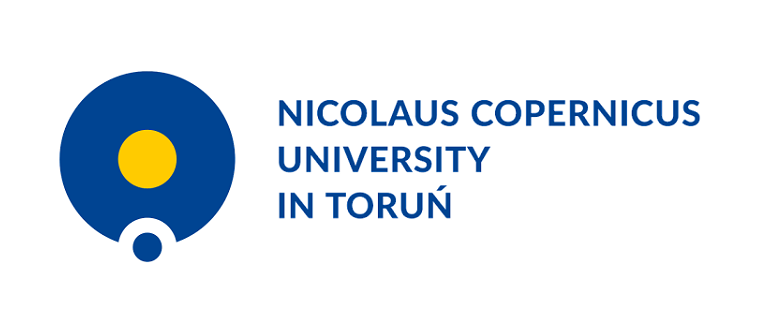May these eyes lie?
Apgar score is not an objective tool, it does not decide on resuscitation of a new born, nor does it play a decisive role in the context of forecasting the development of the child. Yet, for over 60 years, no other better method to evaluate a little guy after the moment of birth has been invented.
Apgar score serves to assess the newborns after the moment of birth on the basis of five parameters: the function of the heart, respiratory system, color of the skin, muscle tension and a reaction to stimuli. For each function, the baby may score zero, one or two points. This assessment is carried out in the first, third, fifth and tenth minute of life and later if necessary. The first time it was introduced in the United States of America in 1953 by Virginia Apgar.
Since then, every single child born in a hospital has been examined with the eyes of Virginia Apgar. Not for every child, thought, are these eyes the same. In the assessment by the seer, it is very important when the very first minute is passing. This is already a matter of a dispute – points out Iwona Sadowska-Krawczenko, dr. habil., NCU professor from the Faculty of Medicine of Collegium Medicum. – By some, the moment of cutting of the umbilical cord is considered to be the moment of the beginning of a new life. Currently, we delay this detachment by at least one, sometimes two or three minutes. So, the child comes out to the world, it is crying, and if it is healthy, we lay it on the mother's chest. At the same time, the placenta is still connected with the uterus, and still, it is the mother who decides on the condition of the baby. In my opinion, the moment of the actual birth should be considered the moment the child leaves the uterus.
It must be remembered that the parameters of Apgar score are not equal. The action of the heart is the most important of them, and the child may score two points, the same much as for the reactions to stimuli and the color of the skin. Historically, all reactions had to be examined, the newborns were routinely slimed and then the child's reaction to the catheter was examined. Now, we assess the child in terms of its reaction to being wiped, or if it moves energetically or only lies and is little active. And the child can be flabby for many reasons; due to, for instance, a neurological disorder, which occurs early, and not hypoxia.

According to the recommendations of European Council for resuscitation, Apgar score should be used as a criterion of implementing resuscitation. It is necessary to note, however, that in neonatology the knowledge referring to resuscitation is called supported coming to the world as resuscitation is considered by many as chest compressions, ventilation whereas a newborn requires only mild aid, sometimes stimulation of a few initial breaths. A newborn should be qualified for resuscitation much faster than before passing of the first minute of life.
The assessment only and within the first minute cannot be used to prognosticate the development of the child.
If a newborn receives 10 points of Apgar score after 60 seconds since leaving the uterus, this is usually the final assessment at physiological birth giving – say professor Sadowska-Krawczenko. – According to the latest publications it is incorrect as it may happen that the adaptation during the next minutes will be worse, therefore the assessment in the 10th minute is very important. I happen to watch the child being born and kangarooed, as according to the recommendations we must ensure the skin-to-skin contact, and no longer does anyone watches if the skin color of the child is worse or muscle tension weaker. It turns out, however, that even a little worse condition of the newborn within the next minutes helps prognosticate the future development of the child.
The same happens the other way. If a child is born with only 1 point in Apgar score, medics claim this to be asphyxia, which is written in International Statistical Classification of Diseases and Health problems as ICD-10. – So, this is how we get the assessment of asphyxia on the basis of evaluation within the 1st minute, which does not comply with the current knowledge as the newborn may get 3 points in the 1st minute, but it will put itself together and will get 8 or even 10 points in the 10th minute – explains professor Sadowska-Krawczenko. – This makes a huge difference if the newborn gets 3 points in the 1st and 10th minutes.
This is why specialists claim that using Apgar score in the context of prognosticating the child's development matters, but as in the case of resuscitation, it is not decisive. A lot of research is carried out on this issue, and opinions in this matter have been changing many times. It goes without saying that the assessment of the newborn in later minutes of its life is far more decisive. If the child's assessment lowers in the 10th minute, the prognosis of its survival and life quality is the same low.
In general, the assessment of a newborn is usually made by the person who takes the birth, who is usually the midwife and which is in accordance with the decision of the Ministry of Health on the birth care of 2018 and has been binding since January 1st, 2029. – Here, we can also have some conflict of objectivity, as if one does some job, the person usually evaluates it as a good job and is more enthusiastic about the effect of the work done – points out the neonatology doctor. – The midwife who assists at birth wants to assess the child in the best criteria as no one like to admit to mistakes, even though the child's condition does not only depend on the person who helps at birth. If, for some reason, medical doctors are called, it is their opinion which is decisive in the assessment. Taking various specializations into account, the newborns are the worst assessesed by pediatricians and the best by gynecologists.
There is a lot of research which shows how subjective Apgar score is.
I have seen the following experiment: a few films were recorded showing the first minutes of life of different newborns. They were later shown to doctors and midwives. One person, for example, was assessing five different situations on January 1st by only watching the film recordings. – says professor Sadowska-Krawczenko. – The same situations were shown to the same person every few months. What were the results? Not only did different people assess the same child differently on the same day, but also the same person, who was shown the same recording repeatedly for a few months made different assessment. This means that, for instance, on January 1st the person gave the child 10 points, whereas on April 1st, having watched the same recording, the child would get 9 points. This proved that Apgar score is subjective.
At present, we know new methods of monitoring newborns. We may apply a pulse oximeter, which will relatively quickly show the function of the heart and saturation, which is the filling of blood with oxygen. During all difficult births, with the burden of risk, babies should undergo blood gas analysis of the umbilical blood. This method is absolutely more objective. It shows if the newborn has acidosis of breathing, deficits of hydrogen carbonates or high lactate levels, which is a symptom of anoxia of tissues. Yet, every method has its limitations. Not all parameters can be assessed in this way. If a child breathes well, but it had low muscle tension, weak reactions, due to Apgar score we may suspect a neurological problem and prognosticate a future development.
What is interesting, despite the condition of the child Apgar score is also affected by geographical location and cultural differences. As professor Sadowska-Krawczenko mentions in the article “Is it time Apgar score was revised?" published in a journal "Practical Medicine Pediatrics", 8,2% of newborns in USA receive 10 points after the 5th minute since physiological birth, in Latvia it is 8,8%, in Sweden 85%, and in France 92,7%.
Despite all these limitations, Apgar score is a tool which should be still used – claims professor Sadowska-Krawczenko. – It is a very simple tool, and if anything is to be commonly used, it must be simple. And what is the best, it should be cheap, too. It is recommended, though, that all persons who use Apgar score should periodically undergo training in this matter. This could help make the score of Virginia Apgar more objective.
 NCU News
NCU News







 Natural sciences
Natural sciences
 Natural sciences
Natural sciences